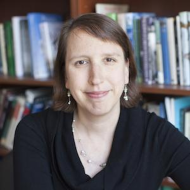
Photo Credit: www.ericcastro.biz via Compfight cc
Education comes in many forms, and not always in a formal classroom setting. Sometimes education occurs in museums or parks or aquariums, sometimes in the media, and sometimes in conversations with a wise neighbor who has a strong background in a field you are unfamiliar with. When I first met Jim Egged, a former firefighter and hazardous materials specialist in the Detroit suburbs, I was intrigued by the connections he made between his job protecting the public from hazardous materials and his work now. As a firefighter, he worked for years as a public advocate for safety, and then later, when he retired, his strong interest in advocacy for public safety widened from fire and health to the environment at large.
I sat down with Jim recently to talk about his transformation from public safety advocate as a firefighter to a strong advocate for education on climate change and environmental issues. Jim says it wasn't much of a change for him—public safety takes many forms, and education is key. But don’t let me speak for him—here he is in his own words.
Q. Can you talk about your background as a firefighter and your new activities since retiring?
Both of my parents were always environmentally conscientious and they instilled that in us. After becoming a firefighter, I soon realized the connection between environmental concerns and public safety. My work at the fire department coupled with my education prompted my supervisors at the time to recommend that the chief place me on the county mutual aid hazardous incident response team. After retirement, I began working with lawmakers, helping them understand that protecting the environment from various pollutants is a matter of public safety.
Q. You recently interacted with a local weather forecaster who denied—on the air—the existence of climate change. What happened?
On the day of the release of the National Climate Assessment, the weather team from the local NBC affiliate mentioned it on their final prime time report. The weather forecaster in the studio claimed, in short, that it was impossible to predict climate decades in advance. One of the anchors suggested that we should heed the warning and err on the side of safety. Then they cut to the national news. I quickly e-mailed the station, the anchor, and the weather forecaster. The weather forecaster e-mailed me back and said that the National Climate Assessment was a scare tactic by the current administration.
When you deal with climate change deniers, you will get pushback, like I did, but you made your point. If the science has not convinced them by now, it may never. Our only hope is that we can convince the general public to make the personal changes necessary to slow climate change and convince their elected policymakers that the infrastructure needs to be changed as well in order to ensure the safety of generations yet to come.
Q. Has your background in firefighting influenced your view on climate change?
Once a firefighter; always a firefighter. It’s kind of a cliché, but for me it holds true. I find it very difficult to step out of character and not see how climate change is a threat to public safety. Firefighters will have to engage in firefighting, search and rescue efforts, and first aid administration after storms as well as other natural disasters resulting from climate change. Likewise, they will have to anticipate such disasters: preparing for search and rescue efforts, preparing for extended wildfire seasons, and building construction for storm and flood resistance. The connections between fire safety and climate change for me are apparent. All of this does make me more concerned about climate change than the average citizen. As part of my job on the department, I educated the public on how to keep fire safe. Therefore, I have made it part of my mission to warn the public of the dangers of climate change and what we can do in our lives to possibly reduce its potential effects.
Climate change presents a clear and present danger to public safety. This holds true on multiple levels from sea level rise to extended wildfire seasons in a hotter drier West. The simple physics of temperature flow and pressure differential in the atmosphere, coupled with sea ice melt changing ocean salinity and currents, makes it obvious to the most casual observer that storms will become more intense. These are just a few examples of how climate change is a threat to public safety.
Q. What would you recommend for someone who is interested using their background to educate the public on climate change as you have?
Climate change is a diverse subject—finding a personal passion that aligns with one aspect of climate change should not be difficult. Find what you love, combine it with what you know, and use it to change attitudes toward climate change. Every means of gainful employment does not always inspire passion about climate change. The passion is usually connected with service, and that is the connection that I make—I’m passionate about helping people, and teaching them about climate change is one way to do this.

